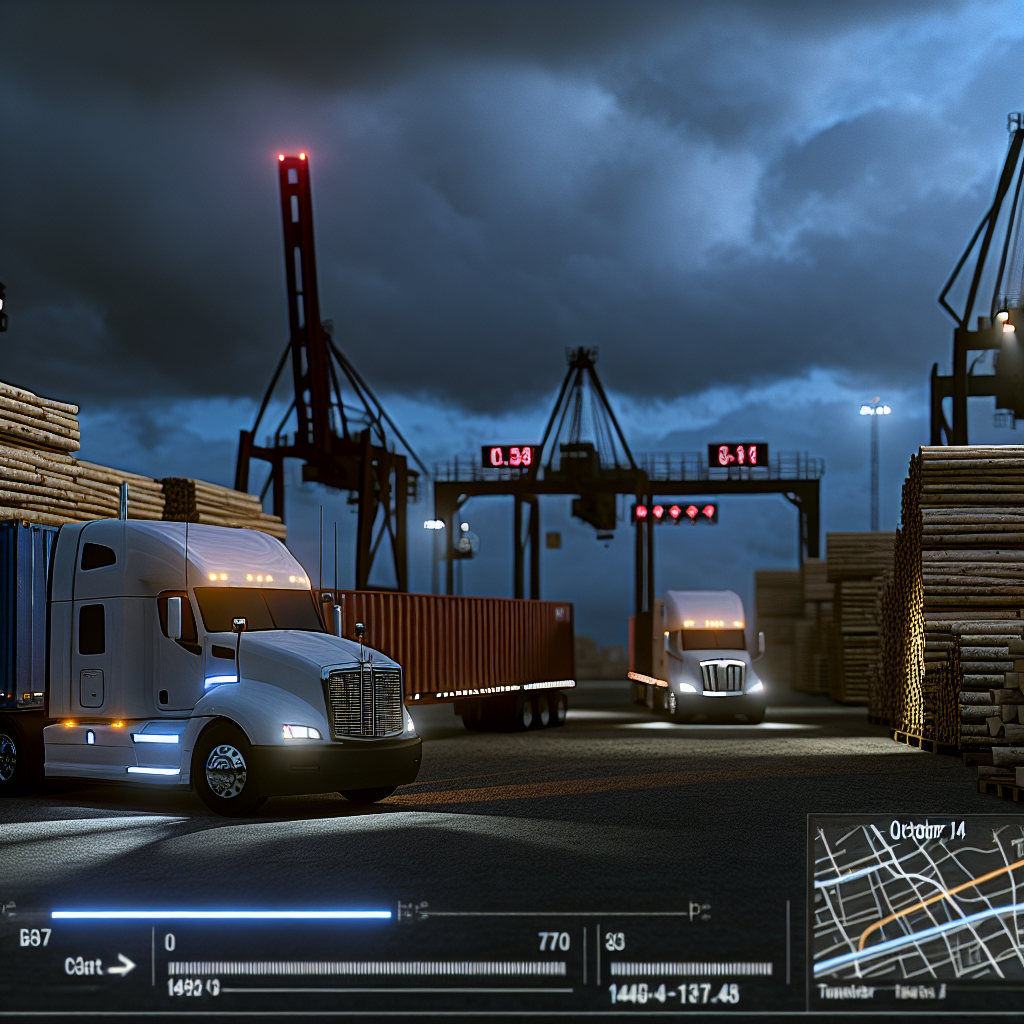President Donald Trump has approved new tariffs on imported wood products that will ripple quickly through U.S. freight networks, especially flatbed and dry van. A presidential proclamation issued September 29 levies a 10% duty on softwood timber and lumber and a 25% tariff on upholstered wood products and on kitchen cabinets and vanities. The rates take effect at 12:01 a.m. ET on October 14 and are designed to rise on January 1, 2026, to 30% for certain furniture and up to 50% for cabinets and vanities unless trade partners strike deals with Washington. The proclamation also caps duties from the European Union and Japan at 15% and leaves room for country-by-country negotiations in the weeks ahead.
Markets digested the news quickly. Homebuilder shares slipped while lumber prices firmed, a combination that points to cost pressure for construction but renewed pricing power for domestic mills. Lumber futures climbed and trading activity spiked into the evening of September 30, even as the iShares U.S. Home Construction ETF fell. Analysts said the tariff package could add roughly $1,000 to the cost of a new home, though large builders may buffer some of the blow.
The White House framed the move as a Section 232 national security action tied to industrial resiliency, arguing that overreliance on imported wood threatens defense readiness and critical infrastructure. The proclamation explicitly sequences two phases—initial duties on October 14 followed by higher rates on January 1—while tasking trade officials with negotiating alternatives that could avert the step-up. For EU and Japan, Washington signaled ceilings near 15%; separate coverage indicates the United Kingdom could be limited to 10%.
For truckers, the near-term playbook is about timing and direction. Ahead of the October 14 start date, importers of cabinets and upholstered furniture have an incentive to pull forward arrivals, briefly juicing drayage and transload volumes at gateways before a likely slowdown in containerized furniture moves. After mid-October, expect a relative pivot: more domestic mill output means more regional flatbed and van loads of lumber and panels moving from Southern and Pacific Northwest mills into building materials DCs and job sites—while some cross-border lumber flows and transpac furniture volumes soften under the new cost umbrella. These shifts won’t happen uniformly, but carriers positioned near sawmills, panel plants and home-furnishings DCs should see bid activity tick up as shippers re-map inventory. (Analysis)
Global suppliers are already signaling their playbooks. Major furniture makers concentrated in Vietnam say they will keep production in place and plan to pass on at least part of the new duties to U.S. buyers rather than relocate factories—an approach that could translate into fewer containerized SKUs and longer reorder cycles once current inventories clear.
Legal and policy risk remains high into November. U.S. Trade Representative Jamieson Greer said this week that tariffs will remain a “core” tool regardless of how the Supreme Court rules on challenges to earlier emergency-based duties, noting the administration can lean on Section 232 and other authorities. For carriers and 3PLs, that means treating October 14 as the start of a new baseline, not a one-off, and building tariff clauses, repricing triggers and mode-shift options into contracts through peak construction season.
What to watch through year-end: the January 1 escalation, differential treatment for EU and Japan that could redirect some sourcing, and whether targeted negotiations produce carve-outs that alter flows again. Freight providers tied to homebuilding should plan for tighter delivery windows on domestically sourced wood, longer dwell on international furniture containers as importers weigh duty-paid decisions, and a bump in short-haul replenishment from regional mills as retailers and pro channels recalibrate assortments. (Analysis)
Sources: FreightWaves, The White House, Reuters, Financial Times, Barron’s, Associated Press, Investopedia
This article was prepared exclusively for TruckStopInsider.com. Republishing is permitted only with proper credit and a link back to the original source.




